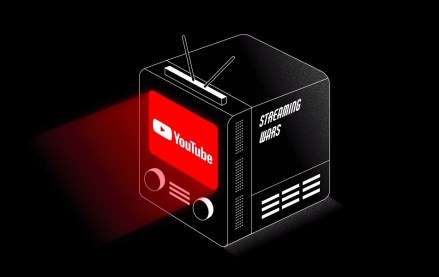
Digiday is at Possible giving you the latest industry news out of the event in Miami. More from the series →
After nearly 30 conversations with a variety of executives attending Possible last week in Miami, a few topics bubbled to the surface, from a cooling of the merger and acquisition market to the opportunities and challenges of retail media, to the power of sports to unify a divided country and world.
These conversations were captured at Digiday’s studio at Possible (Digiday is a media partner of the conference), and the following is a sampling of interviews.
For any not here, please visit Possible’s YouTube channel which featured all the interviews.
Christopher Vollmer, managing director at MediaLink, said the M&A market had been expected to be red hot after the election last fall, but has cooled off considerably since Jan. 1 — even though deals are still getting done notably in sports, which he described as an “attractive” deals market.
“It’s been a very disappointing M&A market even before the most recent series of on-again off-again on-again tariff speculation,” said Vollmer. “Already the M&A market has been impacted by uncertainty. And any time you want to do something big like an acquisition, it typically requires a lot of certainty on behalf of the buyer, especially around future valuation.”
“Anyone who’s having a conversation with the CFO about is, how quickly (if we need to) can we take costs out? If tariffs are imposed, that could affect companies that have earnings all over the world, and if that’s the case where the dollar’s in a certain situation where it’s devaluing and projections of revenue aren’t worth the same, the only way they can meet their commitments to Wall Street especially, is by performing on the cost side. And that’s where you’d see them do things like not hiring or reducing staff.”
On the agency side, the outlook for the ad marketplace is definitely mixed. Sean Moran, COO of Evergreen Trading, a barter or solutions agency that he described as “a foam pit” for clients and media sellers with inventory issues, said economic uncertainty can spell opportunity for his firm but it requires talking to more than just the CMO. “We talk not just with CMOs — we also bring them into their own conversations with their CFOs and their head of procurement,” said Moran. “This way you’re building an intellectual treasure hunt to get to a solution.”
On the creative side of the business, Nadja Bellan-White, CEO of M&C Saatchi N.A., said in a time where trust among some in the industry might be at a low, she looks to the creator community to help rebuild it. “Creators are really leading us into the future, at a time where trust is at a premium — and let’s be honest, I’m not sure that trust is at an all-time high right now in the marketplace,” explained Bellan-White. “These creators are whom consumers trust the most — their opinions are what matter most and what moves the market.”
Sports, to Bellan-White, is another “key differentiator” and sorely needed in the market. “At a time where there’s a lot of divisiveness, to know that sport in fact can be that great unifier across the country and across the world is probably what the world needs now more than ever.”
Speaking about creators and influencers, Ziad Ahmed, who’s the head of Next Gen at UTA agency, presented onstage at Possible and brought along a handful of creators including Davis Burleson, Michael Vito Valentino of NowThis and others. To him, the impact of creator voices has become the dominant influence in culture today. “If we care about being relevant, we have to be in the news streams and information streams of people,” said Ahmed. “And there’s no question that people — my grandfather included — are scrolling on Tik Tok and scrolling on socials every single day … but what’s cool about being a content creator is anyone can be one.”
Just as red hot as the creator space is retail media and the broader commerce media space. Instacart’s head of agency partnerships at Instacart, Suzanne Skop, noted that the big conversation she heard and had at Possible and other conferences is the growth of retail media networks and their variety of different proprietary offerings, which leads to a lack of standardization, and can put pressure on agencies to pick and choose just a few partners to work with — all of which can negatively affect budgets. “There’s all different ad formats, there’s all different measurements,” she said.
Other conversations include:
Mike Stone, chief strategy officer at independent agency Wpromote, explaining how some clients are “dusting off the covid playbook” to get through these turbulent times.
Mark Grether, general manager of PayPal Ads, which offers a “transaction graph” as a differentiator among retail media networks given PayPal’s wealth of consumer spending data, explained that “transactions are the new cookie.”
Daniel Block, head of corporate development at Fetch, said he’s looking to help brands move product, by driving incremental sales via use of LLMs and other gen AI tools. “It’s all deep-rooted in ranking and relevance, so we’re using artificial intelligence through all that purchase behavior to make sure that each individual consumer’s app looks different than the next, delivering the right message at the right time, and ultimately showing them the right offer,” said Block. “You have to really lean into performance” in troubled times, he added.
Finally, Avery Akkineni, CMO for VaynerMedia, talked about virality and its upside. “We’ve really been leaning to the most is social platforms,” she explained. “Any single person today at this conference can make a post that goes viral — and it can go viral for good reasons or not good reasons as you know. This interview — who knows? God forbid it goes viral!”
More in Marketing

Lowe’s wants to do more with AI shopping in 2026
Mylow, a shopping assistant powered by ChatGPT that launched in March, is already driving double the conversion rate for online shoppers.

‘This isn’t the old pre-roll world’: YouTube has been talking TV — now it’s selling that way
YouTube is ramping up efforts to get TV’s largest advertisers to move more of their budget into its platform.

As every screen becomes shoppable, attribution problems resurface
As more media environments become points of purchase, attribution and measurement remain the thorn in the side of commerce execs.








